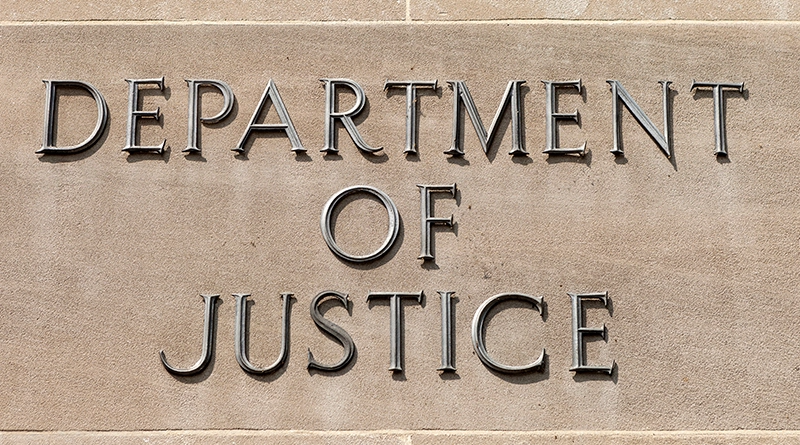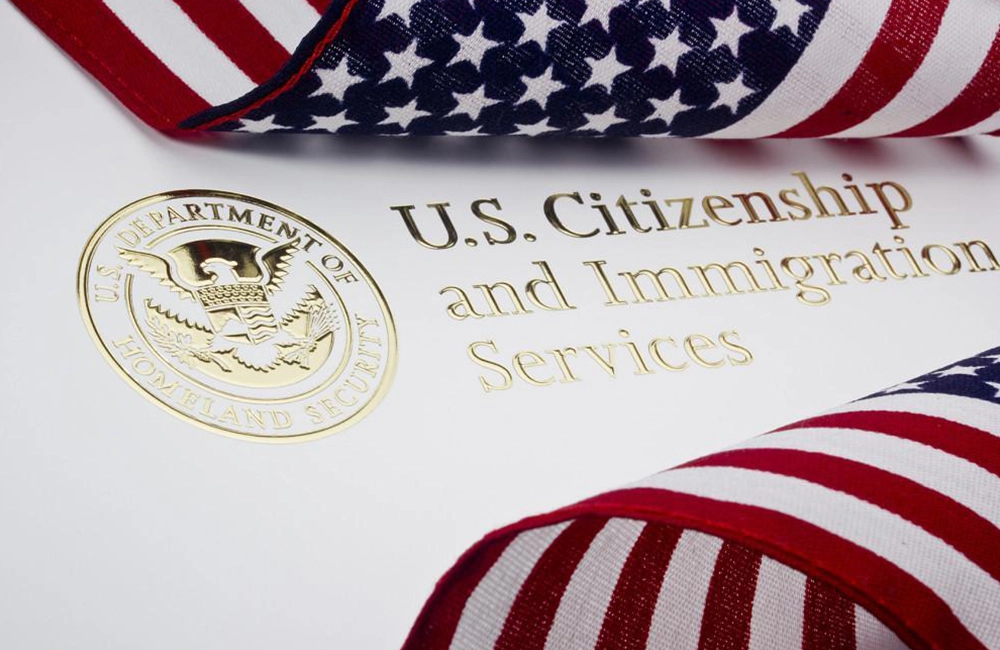What You Need to Know About the Biden Administration’s New Asylum Restrictions
On May 10, 2023, the Department of Homeland Security (DHS) and Department of Justice (DOJ) published an advance copy of the departments’ new asylum regulation, titled “Circumventing Lawful Pathways”. The departments state that the regulation is designed to address the spike in illegal border crossings associated with the end of the Title 42, a public health order that allowed DHS to quickly expel illegal border-crossers without having to undergo typical immigration processing procedures.
The new rule imposes a “rebuttable presumption” of asylum ineligibility to illegal border-crossers who do not schedule their arrival using the CBP One app or have been granted parole under one of the Biden administration’s new entry programs if they have not first applied for protection in a country they transited through en route to the United States. An alien must also have been denied protection in the country they transited through to avoid the presumption against eligibility or demonstrate that they experienced a serious technical difficulty in using the CBP One app, such as a language barrier, illiteracy, significant technical failure, or other “serious obstacle” that prevented the alien from using the app to schedule their unlawful arrival with the government. The rule only applies to aliens who enter the United States over the two years from May 11, 2023, to May 11, 2025.
Applicants for asylum can also avoid this presumption against eligibility if they demonstrate that they, or a family member traveling with them, experienced “exceptionally compelling circumstances”. These circumstances include, but are not limited to, establishing they faced an acute medical emergency, or that they experienced an imminent and extreme threat to life or safety, such as a threat of rape, kidnapping, torture, or murder.
Most importantly, the regulation allows families to circumvent application of the presumption against asylum eligibility if one family member is able to establish eligibility for withholding of removal under 241(b)(3) of the Immigration and Nationality Act (INA) (covering persecution claims) or under 8 C.F.R. 1208.16(c)(2) (covering torture claims). Unaccompanied alien minors and trafficking victims are also exempt from this rule.
The Biden administration claims that the regulation will allow the United States to more quickly remove individuals who do not establish a reasonable fear of persecution or torture in the country of removal. The administration’s failure to close existing loopholes in the expedited removal process, remove pull-factors for illegal immigration (such as its far-reaching non-enforcement policies), and refusal to enforce the INA’s mandatory detention laws, however, will continue to pose serious obstacles to deterring illegal immigration to the United States.
Southwest Land Border Encounters
The departments stated that they believe the policies in this rule are justified “in light of the migration patterns witnessed in late November and December of 2022, and the concern about the possibility of a surge in irregular migration upon, or in anticipation of, the eventual lifting of the Title 42 public health Order”. As CIS has reported, for the 30 days ending December 24, 2022, total daily encounters along the Southwest Border consistently fluctuated between approximately 7,100 and 9,700 per day, averaging approximately 8,500 per day, with encounters exceeding 9,000 per day on 12 different occasions during this 30-day stretch. Officials estimated that “without a meaningful policy change”, border encounters could dramatically rise to as high as 11,000 per day.
Indeed, total encounter numbers reached an all-time high in FY 2022 and they remain at historically high levels. This remains true even as encounters of Cuban, Haitian, Nicaraguan, and Venezuelan nationals have fallen in recent months with the advent of the Biden administration’s new, but unauthorized, parole programs. The departments also admitted that the “people presenting the greatest processing challenge … are unique encounters”, not “repeat” border-crossers, whom DHS officials have previously blamed in part for the historically high numbers.
What Changed from DHS and DOJ’s Initial Proposal
The final rule made a handful of changes to the departments’ rule that was proposed in February 2023. The most important changes to the rule affect the “family unity” exception to the rule, mentioned above, the rule’s geographic applicability, and its application to accompanied minors who choose to apply for asylum after the two-year period ends.
First, DHS and DOJ expanded its “family unity” exception to broadly now include aliens who do not arrive in the United States as a family unit, but have family members back home who would qualify for derivative status if not for the application of this rule. Originally, the departments proposed exempting family units (meaning, families who arrive in the United States illegally together) from the rule if one member was determined to be eligible for withholding of removal and would be granted asylum but for the presumption. The departments reasoned exempting family units from the rule and allowing them to receive asylum should be deemed rebutted as an “exceptionally compelling circumstance” to preserve family unity in the United States.
Commenters to the proposed regulation (CIS included) warned the government that this type of exemption could create yet another pull factor for prospective migrants to smuggle children into the United States. In the final rule, the departments acknowledged this concern, stating that the rule “could involve making a dangerous journey with vulnerable family members, such as children”. But rather than strike the exception, the Biden administration decided instead to broaden it. Now, under the final rule, any alien who establishes eligibility for withholding of removal and who has a spouse or child at home who could be eligible to follow to join may avoid applicability of the rule’s presumption against asylum eligibility altogether and receive asylum.
Second, the departments expanded the geographic applicability of the rule’s presumption against eligibility for asylum. Initially, DHS and DOJ proposed to only apply the presumption against aliens who arrived illegally “along the entirety of the U.S. land border with Mexico”. The departments amended this provision to include adjacent coastal borders (i.e., any coastal border at or near the U.S.-Mexico border) in order to not “inadvertently incentivize” aliens to make a “hazardous attempt to reach the United States by sea”.
Third, although accompanied minors remain subject to the rebuttable presumption generally, the departments amended their proposal to exempt them from application of the presumption if they apply for asylum after the two-year period the final rule will be in effect. In this circumstance, however, a minor must apply as a principal asylum applicant (as opposed to a derivative applicant). The departments stated that this exception is appropriate, recognizing that minors who arrive as a part of a family unit are “subject to the decision-making of their parents”. While the departments stated they believe this exception strikes a “balance”, it provides families yet another reason to bring a child illegally to the United States.
What Provisions DHS and DOJ Decided to Keep
DHS and DOJ did not follow CIS’s advice to remove the easy-to-exploit loopholes for aliens who fail to apply for protection in a third country they transit through en route to the United States. First, neither the proposed rule nor the final rule ever required migrants to apply for protection in a third country which they transited through. Requiring a prospective migrant to schedule their arrival using the CBP One app or to demonstrate that they have technical, language-related, or other barriers interfering with their ability to do so, will hardly deter a prospective migrant from seeking to enter the United States illegally. CBP has encountered aliens from countries around the globe illegally crossing the southern border since 2021. The CBP One app, on the other hand, is only available in five languages (English, Spanish, Haitian Creole, Portuguese, and Russian).
Second, the unfortunate and undeniable fact is that many migrants do face serious threats to life or safety on their journey to the United States. Evaluating the veracity of such claims will be hard, if not impossible, to prove, and the exception will likely be applied to many, if not most, applicants who claim this claim.
Why This “Deterrence” Policy Falls Short Again
Encounters in the border region are not the whole story, and are becoming less and less relevant as the days pass in illustrating the breadth of the mass illegal migration crisis to the United States. That’s because an inadmissible alien who enters with a CBP One appointment is still an inadmissible alien. Likewise, a (unlawful) grant of parole does not cure the border crisis, it only changes how the government is required to report the information to the public. The Biden administration has designed this regulation not to prevent illegal immigration to the United States, but to prevent inadmissible aliens from entering in a manner that is easy to document via visual media and has damaged the administration’s political prospects and polling results.
And, finally, a point I’ve discussed before: Asylum is not the only form of immigration relief an alien can receive after they make a credible fear claim. An alien could be ineligible for asylum, but nevertheless be allowed to remain in the United States because an asylum officer determines that the alien has a “significant possibility” of eligibility for withholding or deferral of removal under the regulations implementing the Convention Against Torture (CAT).
Because the regulation does not amend eligibility under statutory withholding of removal (which also provides protection for aliens subject to persecution) or the regulations implementing CAT, aliens subject to the third-country transit policy may still receive positive credible fear determinations and be paroled into the United States (unlawfully, because of section 235 of the INA’s detention requirements). Without expanding and enforcing the INA’s mandatory detention requirements for recent illegal border-crossers, DHS is maintaining the most significant pull factor into the United States: the likelihood of prompt release into the interior. Therefore, a regulation that limits asylum eligibility only for a relatively small portion of border-crossers will not be sufficient to close loopholes in the broken system.






